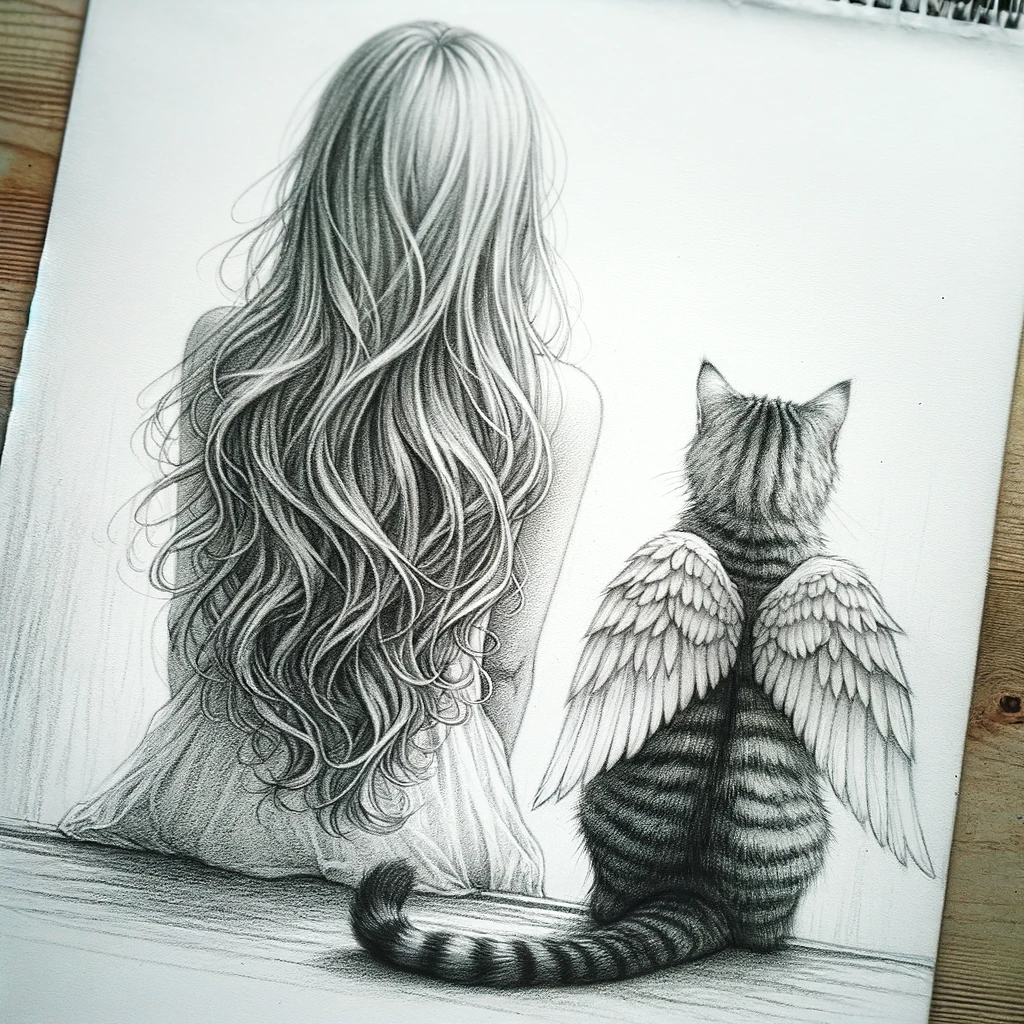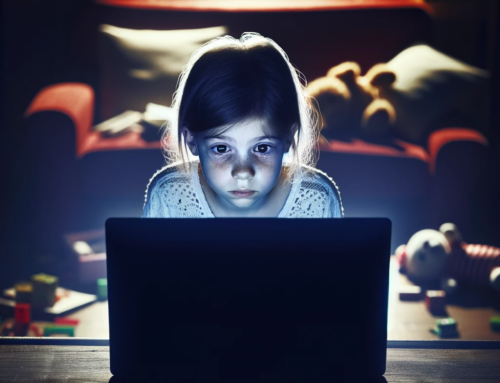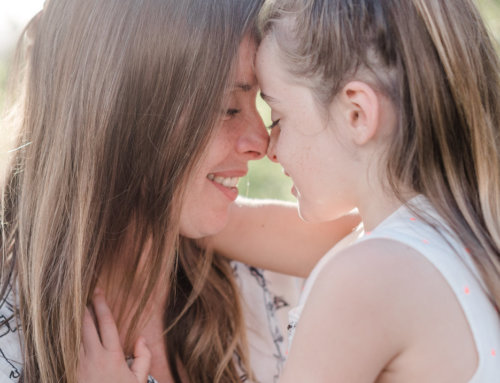Here we find ourselves, my eleven-year-old daughter, and I, in the midst of a storm of emotions. She’s hurling words I can’t put into writing, aimed at both my husband and me. She’s sprawled on the floor, her fingernails tracing lines on her arms, tears flowing uncontrollably, and her breath is coming in rapid gasps.
“This is not okay,” my husband says. “We should stop.” I assure him no; it’s okay and remind him this is where we see a central nervous system disability, the thing that others don’t see, the thing she masks hardest.
It’s been a relentlessly stressful two weeks, culminating in an overwhelming fight-or-flight response, pushing her to breaking point.
How did we arrive here, and more importantly, how did we then navigate our way out of this turbulent sea of emotions?
Our journey began when my daughter’s hamster and two beloved cats passed away during a six-week adventure in Bali. Just when the heartache seemed unbearable, we received the devastating news that our other cats were also ill.
It’s crucial to understand that neurodivergent children rely on emotional support animals. Cats, in particular, release oxytocin, serotonin, and dopamine – these children often really NEED these happy chemicals, which deepens their connection with these furry companions to a much deeper level than normal. This is why we ended up with ten indoor cats.
As you can imagine, the cats dying was more than my girl could handle, and we got the first flight (Christmas Eve) home to save the remaining 8 house cats. We literally arrived home at 3 pm on Christmas Day, essentially writing off Christmas entirely. Sick cats, vomit, diarrhea, and most of them not even getting up to greet us. We quickly discovered 4 of the strays we feed were also dead.
With no stores open on Christmas Day, we settled for chocolate rice cakes and sprung into emergency caregiver mode. The vet gave us grim odds, a 50% to 70% mortality rate, and wished us luck. But with guidance from an incredible woman named Sarah, who coached me even on Christmas Day, we began healing, hydrating, warming, cuddling, and doing everything in our power to nurse our cats back to health.
To make a long and arduous story short, all the remaining cats miraculously survived against the odds. I administered sugar water, vitamins, probiotics, love and I used my Healy for frequency healing (scans revealed friendly flora gut programs they desperately needed).
Beneath the surface of cat care, we had a child struggling to cope. Emotions swirled, worry loomed, and screen time increased during our first week of survival mode while my husband was still away.
The grief a child experiences upon losing a pet is overwhelming, but losing three pets, including the one who nestled her kittens on my daughter’s pillow each night, was heart-wrenching.
Another, her kitten named Mousy, so-called for his mouse-like personality, who eagerly awaited bedtime on her pillow for hugs. His absence shattered her heart the most. As every night she was reminded he died alone when he was such a needy cat and now each night when the other cats come it is he she longs for most.

Although Mousy’s demise was unconfirmed, his disappearance indicated a grim fate, as he was a true house cat. Upon returning home, my daughter sensed his location on our vast outdoor woodland terrace, leading her directly to his lifeless body snuggled under an olive tree root. (ADHD and extra sensory abilities, well-documented but a story for another time).
To try and bring some joy to life, we booked a riding lesson on a beautiful big horse, as this always makes my girl feel good. But the horse got startled and spectacularly threw my daughter to the ground, hard. So not only is she in pain emotionally, but now her body hurts all over too.
Thus, we approached the verge of a monumental breakdown. Emotionally and physically, she was overwhelmed.
My husband returns home, and we defrost our mama cat (as we hated the thought of the vet disposing of her). This, as you can imagine, is highly emotive but also cathartic as at least we can say goodbye.
Then two days later, we finally get to the bit where we can finally set up her new Christmas iPad, and the thought that the cloning could go wrong and somehow almost impossibly she could lose all her data, specifically Minecraft, is so overwhelmingly impossible. She descended into a state best described as a Flipped Lid (an apt analogy courtesy of Daniel Spiegel).
These moments show me how far we have come from those horrific days before I had the tools and know how. Now I know I do not need to enter into her chaos; I do not take the name-calling personally, and I do not try to prevent her from experiencing these waves of emotion, I can just support her.
In these moments she is in a primitive brain state. All I can do is reassure and model calm, deep breathing, soothing tone, absolutely no demands (I will write another blog on this, but demand-avoidant children perceive all demands, from “calm down” to “take a deep breath,” as demands that can push them further into panic mode).
All I can do is name what is going on, “Okay, baby, I can see this is really hard for you; it’s been a really big two weeks and now your central nervous system is overloaded; you are okay.” Then she may well say “F You” at this stage, but that’s okay; it wasn’t personal; it was her way of coping. Nothing personal.
There is no blame, no shame.
As she screams on the floor, unable to pull it together, I can gently remind her to remember her breathing, remembering to keep it low demand “remember your breathing” . I am not saying “Take a deep breath” as that is a demand and that’s going to get me nowhere.
My poor husband, feeling the pressure of setting up the iPad, is now close to saying, ‘Forget it; this is insane; I can’t even think, let alone focus’ but I reassure him that we have to go through it. And when for a moment he says he is going to stop, our girl screams even more because it has to be done before an online class tomorrow.
And so we get through it, almost instantly going back to total normality. The storm has passed without anyone falling out or messing it up.
What is interesting is at the end when she is calm and normal, in literally just a few minutes after a pretty intense 20 minutes. I can then observe how much work it takes not to be reactive, not to try and fix it but to let her process and self-regulate.
By not fuelling her raging fire and being the soothing water to cool her may look passive, but it takes everything I have, not to yell or react. In those moments of post-crisis calm, I recognise my own need for self-soothing, often manifesting in a craving for chocolate and mindless scrolling on Instagram.
I will be sharing many of the tools I use to stay calm in these moments in my March 2023 masterclass so please sign up to my mailing list if you would like free access to that.
Feel free to ask questions or drop me a DM on my Instagram.




